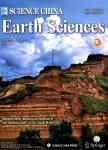Precipitation recycling ratio and water vapor sources on the Tibetan Plateau
Precipitation recycling ratio and water vapor sources on the Tibetan Plateau作者机构:Department of Earth System ScienceMinistry of Education Key Laboratory for Earth System ModelingInstitute for Global Change StudiesTsinghua UniversityBeijing 100084China National Tibetan Plateau Data CenterState Key Laboratory of Tibetan Plateau Earth System and Resource EnvironmentInstitute of Tibetan Plateau ResearchChinese Academy of SciencesBeijing 100101China Key Laboratory of Water Cycle and Related Land Surface ProcessesInstitute of Geographic Sciences and Natural Resources ResearchChinese Academy of SciencesBeijing 100101China
出 版 物:《Science China Earth Sciences》 (中国科学(地球科学英文版))
年 卷 期:2022年第65卷第3期
页 面:584-588页
核心收录:
学科分类:07[理学] 0708[理学-地球物理学] 0706[理学-大气科学]
基 金:supported by the Strategic Priority Research Program of Chinese Academy of Sciences(Grant No.XDA2006010201) the Second Tibetan Plateau Scientific Expedition and Research Program(Grant No.2019QZKK0206)。
主 题:Regional water vapor balance Precipitation recycle Water vapor tracing Precipitating period
摘 要:Precipitation recycling ratio(i.e.,evaporation-precipitation feedback strength)and water vapor sources are two key aspects of regional water cycle,and their quantification is essential for understanding water cycle processes and their changes.The results of existing studies on the precipitation recycling ratio and water vapor sources for the Tibetan Plateau were highly controversial.This article clarifies different frameworks for understanding the water cycle.It points out that(1)the ratio of evaporation to precipitation depends mainly on climate regimes,while the precipitation recycling ratio is closely related to both the climate regimes and the scale of the region of interest,and(2)the water vapor sources depend on the traced period(precipitating or non-precipitating period)and the degree of tracing.Within the same theoretical framework,there is no fundamental conflict among the results of different studies on the water cycle in the Tibetan Plateau.



